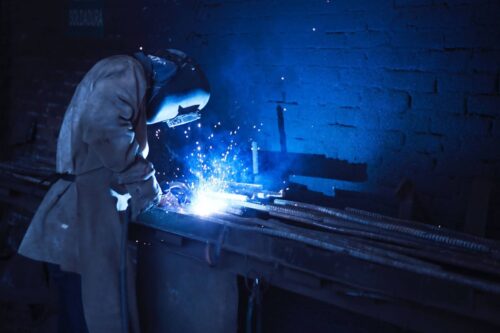Warehouse Vs. Factory: Purposes and Types of Each

Warehouses and factories, each integral to supply chains and manufacturing, serve distinct yet complementary functions. To optimize logistics, warehouses focus on efficient storage and distribution centers, often situated near key transport routes.
Warehouses and factories are vital components of global supply chains and manufacturing. They streamline the storage and distribution of goods, while factories focus on producing a wide range of products, driving economic growth and innovation.
Continue reading to explore the different types and understand their impact on the economy and environment, and you’ll gain valuable insights into these vital components of the industrial world.
Purpose Of A Warehouse
The warehouse’s primary function is the secure storage of products, ensuring they are protected from damage, loss, or spoilage. Warehouses are integral to supply chain management, offering efficient storage and distribution of goods.
Warehouses also play a key role in inventory management, facilitating the smooth movement of goods from suppliers to customers. Strategically located warehouses enhance supply chain efficiency by reducing transportation costs and ensuring timely delivery.
They offer value-added services like order fulfillment, labeling, and quality control, further optimizing the supply chain process. These are important for maintaining consistent supply and demand, stabilizing market prices, and contributing to the economic benefits of businesses.
Purpose Of A Factory

Factories are industrial facilities where raw materials are transformed into finished products using machinery, technology, and human labor. They originated during the Industrial Revolution, shifting from handcrafted goods to mass production.
Modern factories are characterized by complex machinery and automated systems, optimizing efficiency and productivity. These facilities are pivotal in economic growth, contributing to both the manufacturing sector and the broader economy by adding value to raw materials and creating wealth.
The continuous evolution of manufacturing methods, including advanced technologies, plays a crucial role in shaping the industry’s efficiency and economic impact.
Regulations Governing Warehouse And Factory Building
Regulations for warehouses and factories are crucial for safety, efficiency, and legal compliance. They include vehicle regulations for safe and environmentally compliant transportation, goods handling standards, and adherence to international trade and customs for cross-border movements.
Privacy laws mandate secure storage and processing of personal information, and cybersecurity measures are essential against data breaches. Factories must comply with specific fire safety regulations, site selection rules, space requirements, and coverage limitations.
Warehouses and factories must focus on design and maintenance strategies, prioritizing sustainability, safety protocols, and security of personnel, equipment, and materials.
Types Of Warehouses: Shipping And Specialized 3PL
Warehouses have evolved to meet the dynamic needs of modern supply chains. Traditional shipping public warehouses, focused on storage and a distribution center for transportation, have given way to specialized Third-Party Logistics (3PL) providers.
These 3PL warehouses offer customized tasks, integrating seamlessly with companies’ existing supply chain systems and providing scalable, flexible solutions for handling complex logistics operations, including international trade compliance, and using advanced technology to optimize supply chain efficiency.
This evolution towards specialized 3PL represents a shift from basic storage facilities to comprehensive logistics and supply chain management solutions, significantly impacting the industry by enhancing efficiency, reducing costs, and expanding global reach.
Types Of Factories: Hybrid, Small-Scale
The manufacturing landscape has evolved with the rise of hybrid and micro-factories, adapting to current technological trends. Hybrid factories merge traditional manufacturing methods, often with a warehouse attached, using modern technologies like automation and AI, significantly enhancing job efficiency and production capacity.
Microfactories, representing small-scale manufacturing, are noted for their high automation, technological advancement, and smaller scale. These factories excel in agility, cost-effectiveness, and sustainability, enabling them to adapt to changing market demands and offer personalized products quickly.
This shift to more innovative, flexible manufacturing models aligns with the industry’s broader trend toward digital transformation, focusing on an efficient and customer-centric production process.
Warehouse And Commercial Real Estate Values
The recent value of commercial warehousing in real estate assets is influenced by location accessibility, economic factors like interest rates, supply and demand dynamics, physical condition of properties, zoning regulations, and energy efficiency.
Strategic and prime locations with good transportation access enhance logistics efficiency, increasing value. Economic trends and interest rates impact investment and property values. The increase in demand in sectors like e-commerce can raise warehouse values, while well-maintained and modern facilities attract more tenants.
Conversely, the zoning laws affect property use and value, and energy-efficient warehouses are increasingly prized for sustainability and cost savings, contributing to their market appeal.
Industrial Land And Major Highway Access
Industrial areas near main highways significantly enhance warehouse values due to improved transportation efficiency, reduced costs, and convenient access for factory workers.
The impact varies on the roads, facilitating truck access to the factory and subjectively increasing real estate values, and those acting as barriers or redirecting traffic can decrease them. Proximity to highway exits typically promotes growth and increases property values.
FAQs
Let’s address frequently asked questions about the differences between factories and warehouses.
What Is The Difference Between A Factory And An Industry?
Manufactured products are made in a factory in a specific industrial space, while an industry encompasses multiple types of businesses, factories, and companies in a particular production sector.
What Is The Difference Between Warehouse And Warehousing?
The warehouse is a physical large building for storing finished goods, while warehousing involves managing and operational activities within a warehouse, such as inventory management and order fulfillment.
What Is A Warehouse In Manufacturing?
A warehouse building in manufacturing is a key facility used for inventory storage and management, essential in supporting production and optimizing the supply chain.
Warehouse Vs. Factory: An Industrial Space Summary
Warehouses and factories, each integral to supply chains and manufacturing, serve distinct yet complementary functions. To optimize logistics, warehouses focus on efficient storage and distribution centers, often situated near key transport routes.
Factories geared towards production may incorporate warehouses to streamline processes. Understanding their unique roles and strategic locations is essential for effective industrial operation and supply chain management, ensuring economic efficiency and growth.
Visit or contact inbound logistics to learn about warehouse, factory, and important logistics insights.
